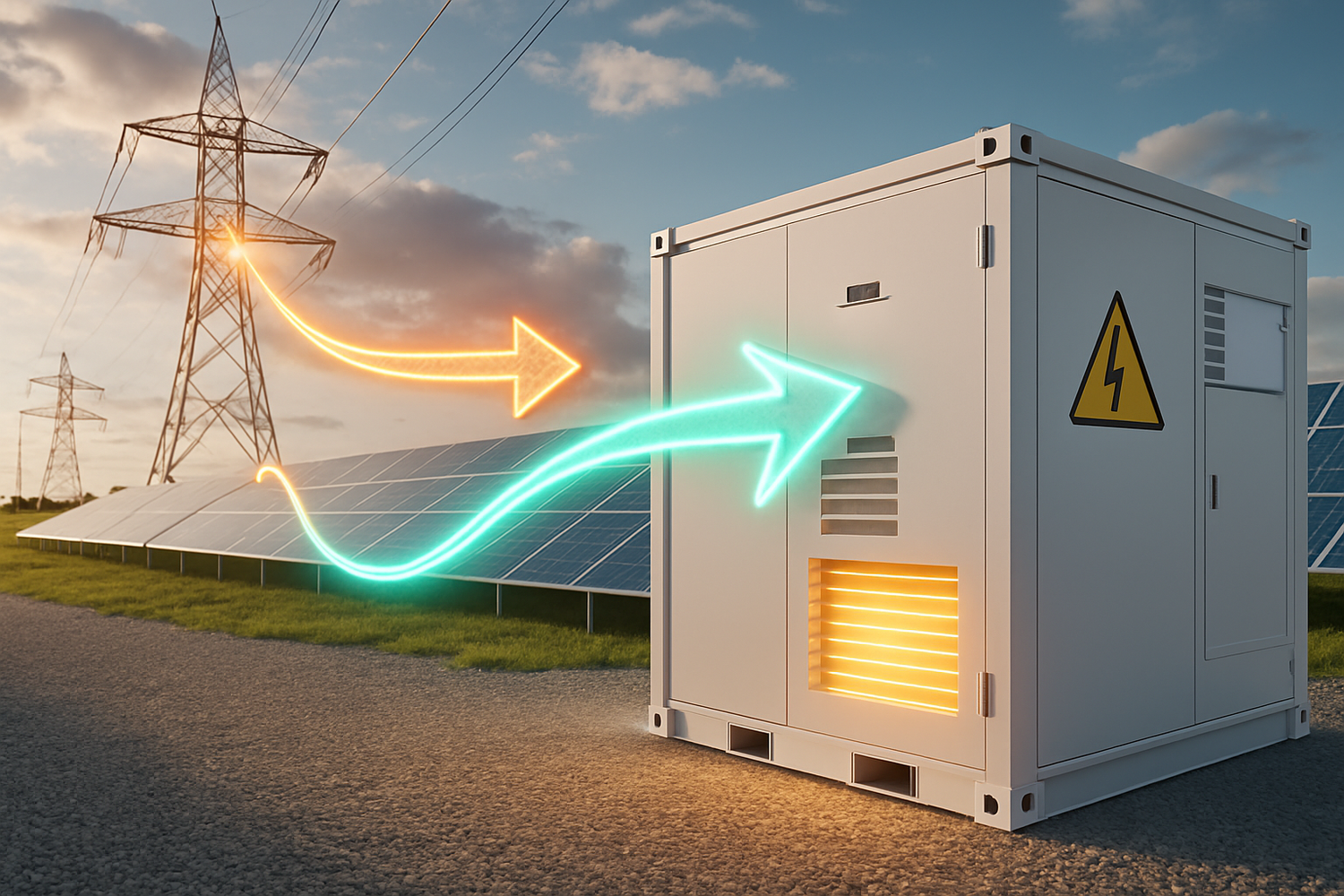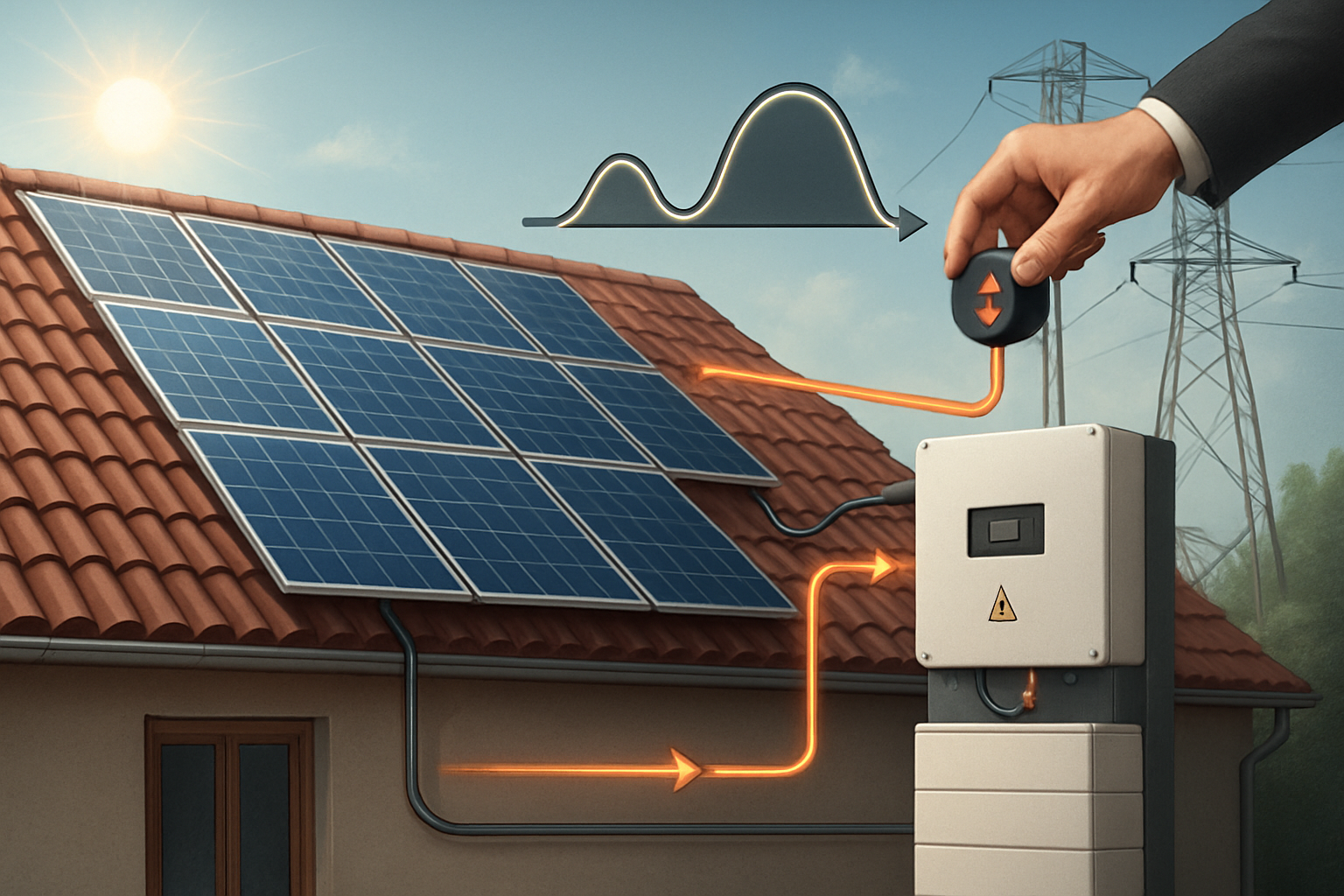The modern energy landscape faces a dual challenge: integrating abundant renewable energy sources like solar and maintaining a stable, efficient grid. Solar power, while clean and sustainable, often generates electricity at times when the grid cannot fully absorb it. This leads to grid congestion and the unfortunate necessity of curtailment, where valuable solar energy goes unused. However, battery energy storage systems (BESS) offer a powerful solution. They transform these challenges into opportunities, easing grid strain and creating new avenues for revenue.

Understanding Grid Congestion and Solar Curtailment
To appreciate the value of batteries, you first need to understand the problems they solve. Grid congestion occurs when the transmission lines cannot carry all the electricity that generators want to send, or that consumers need to receive. This often happens during peak solar production hours when a high volume of electricity floods certain parts of the grid. It creates bottlenecks, limiting the flow of power and sometimes leading to higher electricity prices in affected areas.
Solar curtailment is a direct consequence of these grid limitations or an imbalance between supply and demand. It involves intentionally reducing the output of solar power plants or rooftop PV systems. The Integrating Solar and Wind report by the IEA distinguishes between two types: technical curtailment and economic curtailment. Technical curtailment happens for grid security reasons, such as managing congestion or voltage issues . Economic curtailment occurs when generators reduce output due to low or negative market prices, making it unprofitable to produce electricity . In 2022, for instance, 0.3% of Japan's total renewable energy was curtailed . These events represent lost revenue for solar asset owners and wasted clean energy for the system.
How Battery Energy Storage Systems Address Grid Challenges
Battery energy storage systems are game-changers for grid management. They act as flexible reservoirs, absorbing excess electricity when generation is high and releasing it when demand is high or when the grid needs support. This capability directly tackles both congestion and curtailment.
Congestion Management through Energy Shifting
Batteries can store surplus solar energy during periods of high production and then discharge it during times of high demand or when transmission lines are less congested. This time-shifting of energy reduces the strain on the grid infrastructure, effectively easing congestion. By deploying distributed energy resources like stationary storage batteries closer to demand, we can minimize the need for extensive grid reinforcement . This strategic placement reduces investment needs and enhances local grid resilience.
Mitigating Solar Curtailment
When solar panels generate more electricity than the grid can handle, instead of curtailing the output, batteries can store that excess energy. This ensures that every watt produced by your solar array is captured and utilized, either immediately or at a later time. The IRENA Electricity Storage Valuation Framework highlights that storage can efficiently provide multiple services simultaneously, stacking revenues for greater profitability . This includes avoiding the economic losses associated with curtailment.
Unlocking Grid Revenue Streams with Batteries
Beyond simply solving problems, battery energy storage systems create significant financial opportunities. They enable participation in various grid services, generating revenue that was previously inaccessible to solar-only systems.
Ancillary Services and Market Participation
Batteries are exceptionally fast in responding to grid signals, making them ideal for providing ancillary services. These services are crucial for maintaining grid stability and power quality. Examples include:
- Frequency Regulation: Batteries can rapidly inject or absorb power to keep the grid's frequency stable, which is critical for preventing outages.
- Voltage Support: They can help maintain stable voltage levels across the grid, improving power quality.
- Capacity Firming: By storing intermittent renewable energy, batteries can provide a more reliable and dispatchable power source, effectively firming up variable generation.
The IEA emphasizes the need for market designs that create revenue streams for providers of these services, ensuring that remuneration schemes for grid operators account for these contributions . Batteries, with their rapid response capabilities, are well-positioned to capitalize on these evolving market opportunities.
Capacity Deferral and Peak Shaving
By storing energy during off-peak hours and discharging it during peak demand, batteries can reduce the need for expensive peaking power plants and defer investments in new transmission and distribution infrastructure. This capacity deferral represents a significant cost reduction for grid operators. For individual prosumers (producers and consumers), electricity storage can support the integration of distributed renewables and active participation in demand management, leading to reductions in average household electricity bills .
Energy Arbitrage and Virtual Power Plants
Batteries allow for energy arbitrage, where electricity is bought or stored when prices are low and sold or used when prices are high. This strategic trading of power maximizes economic returns. Furthermore, aggregators can pool distributed energy resources, including industrial demand response and battery storage, into virtual power plants (VPPs) . These VPPs can then participate in wholesale or ancillary services markets, offering flexibility and contributing to system balancing at a reduced cost .
| Benefit Category | Description | Revenue/Cost Saving Mechanism |
|---|---|---|
| Congestion Relief | Reduces strain on transmission lines by time-shifting energy. | Avoids grid upgrade costs, enables more efficient energy flow. |
| Curtailment Mitigation | Stores excess solar generation instead of wasting it. | Maximizes solar asset utilization, prevents lost revenue. |
| Ancillary Services | Provides rapid frequency regulation, voltage support. | Earns payments for grid stability services. |
| Capacity Deferral | Reduces need for new power plants and infrastructure. | Defers capital expenditure for utilities, reduces system costs. |
| Energy Arbitrage | Buys/stores low-cost energy, sells/uses high-cost energy. | Maximizes profit from price differentials. |
Practical Applications and System Integration
The integration of batteries into the energy system is happening at various scales, from individual homes to large utility-scale projects.
Behind-the-Meter Solutions for Prosumers
For homeowners and businesses with solar installations, integrating a home energy storage system (ESS) with lithium iron phosphate (LiFePO4) batteries and hybrid inverters allows them to store their excess solar generation. This boosts self-consumption, reduces reliance on grid electricity, and provides backup power during outages. It also enables them to participate in demand response programs, further reducing their electricity bills .
Utility-Scale Deployments and Grid Modernization
At a larger scale, utilities are deploying substantial battery storage projects to enhance grid reliability and integrate more renewables. The U.S. Department of Energy (DOE) has supported initiatives like the Building a Technically Reliable Interconnection Evolution for Storage (BATRIES) project, which identified nearly 40 areas for improving the connection of energy storage systems to the distribution grid . These efforts are crucial for expanding solar energy capacity, which the DOE's Solar Futures Study projects will need to grow significantly to support a decarbonized electric grid .
Smart electrification strategies, including the deployment of distributed energy resources and smart operation of heat pumps, can play a key role in the energy system . With grid-forming converters, variable renewable energy (VRE) plants can provide even more services, such as voltage formation, further enhancing grid stability .
A Future Powered by Flexible Storage
Battery energy storage systems are not just an add-on; they are a fundamental component of a resilient, efficient, and profitable energy future. By effectively managing grid congestion and mitigating solar curtailment, batteries unlock significant revenue potential for all stakeholders, from individual prosumers to large utilities. They enable a more flexible and responsive grid, ensuring that clean solar energy is fully utilized and valued. The ongoing advancements in battery technology and supportive market designs will continue to accelerate this transition towards true energy independence and a sustainable power system.
Frequently Asked Questions
What is the primary benefit of batteries in managing grid congestion?
The primary benefit is their ability to store excess electricity during periods of high generation and release it during peak demand or when grid capacity is available. This time-shifting reduces strain on transmission infrastructure, preventing bottlenecks and ensuring smoother energy flow.
How do batteries help mitigate solar curtailment?
Batteries prevent solar curtailment by capturing and storing surplus solar energy that the grid cannot immediately absorb. Instead of being wasted, this energy is saved for later use, maximizing the utilization and economic value of solar installations.
Can home battery systems contribute to grid revenue?
Yes, home battery systems can contribute to grid revenue by participating in demand response programs, providing ancillary services through aggregation (like in virtual power plants), and enabling energy arbitrage. These actions can reduce household electricity bills and potentially earn payments for grid support.
Is this legal advice or investment advice?
This article provides general information for educational purposes only and does not constitute legal, financial, or investment advice. Always consult with qualified professionals for specific guidance related to your situation.





Leave a comment
All comments are moderated before being published.
This site is protected by hCaptcha and the hCaptcha Privacy Policy and Terms of Service apply.